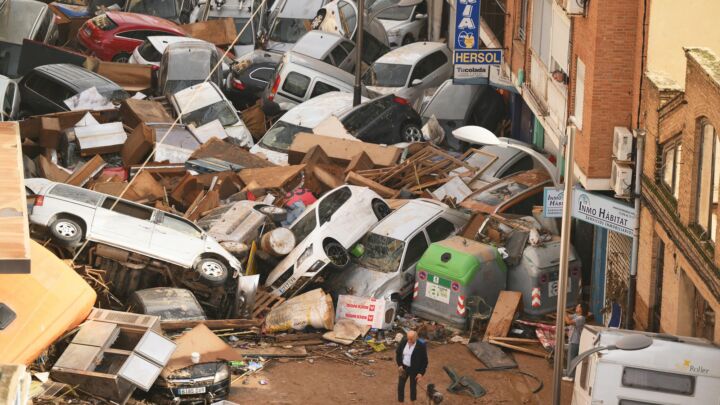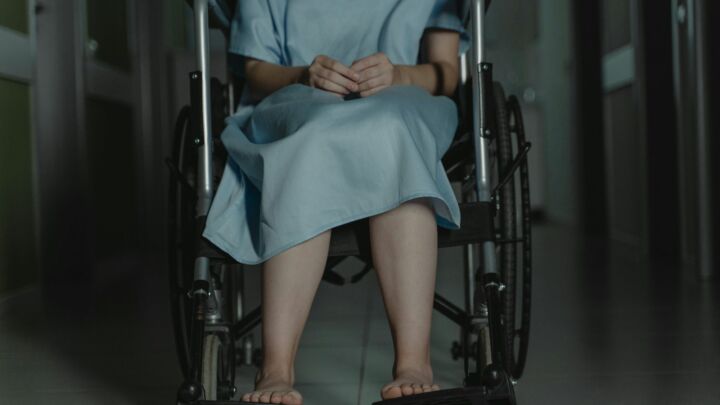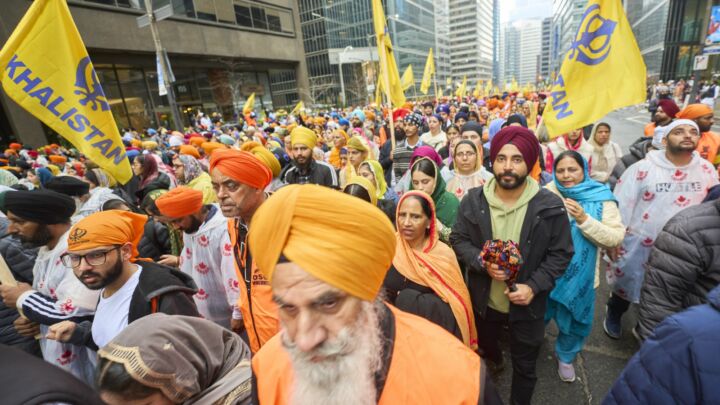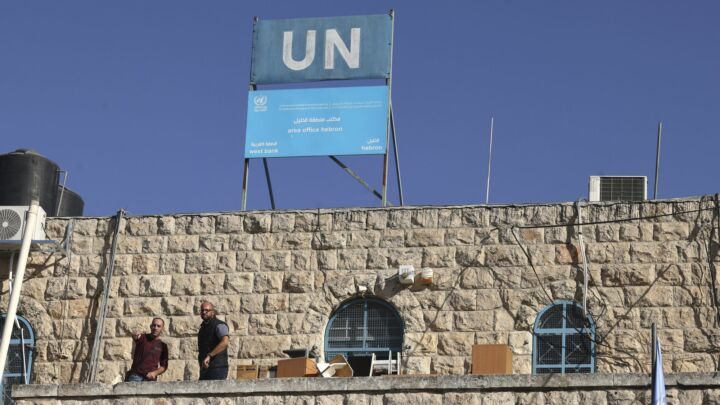Northern Ireland: painting over the cracks
20 years ago Kevin Rooney was defacing loyalist murals. So why is he now concerned that the authorities are removing them?

Want to read spiked ad-free? Become a spiked supporter.
Last week, while the media focused on the report of the Independent Monitoring Commission that confirmed that the IRA was no longer active, officials at Belfast City Council celebrated another symbolic moment in the peace process. They announced an agreement to remove 10 murals with violent imagery from loyalist areas of the city.
In a sign that Belfast is still not quite like any other city in Europe, artists there have been consulting loyalist paramilitaries about plans to paint over the infamous murals that adorn loyalist areas like the Shankhill Road, and replace them with images that relate to the area’s ‘cultural and industrial heritage’.
The move is part of ‘Reimaging Communities’, a project backed by the British government and funded by the Arts Council of Northern Ireland, which is aimed at cleaning up the unwelcome reminders of violence and sectarianism that litter working-class areas of Belfast.
The murals that now cause such offence to officials and politicians have long been associated with the conflict in Ireland. This often-impressive wall art became familiar across the world during the conflict from 1969 to 1994, and ironically tourists to Belfast since the end of the Troubles often head straight for the very images that the authorities are now keen to remove.
Yet these striking paintings were never created with tourists in mind. Throughout the Troubles, the murals – in both loyalist and Irish republican areas – were created spontaneously by talented young people to express their defiance, commemorate their dead heroes, celebrate their victories, or to mark out their territories. In republican parts of Belfast, celebratory murals often went up within days of an IRA operation, such as the attack at Warrenpoint where an IRA gun and bomb attack in 1979 killed 18 British soldiers. Other murals paid tribute to dead IRA members – though the murals always presented victims as martyrs, and the murals dedicated to the hunger strikers or to IRA men killed in action were always characterised by a spirit of defiance rather than defeat.
Loyalist murals also marked individual events and often glorified loyalist paramilitaries who had launched attacks on Catholic civilians, including Michael Stone, who notoriously murdered mourners at a republican funeral in 1988. One particularly macabre loyalist mural is a copy of a famous Iron Maiden LP cover, showing a skeleton wielding a knife dripping with blood and carrying a Union Jack as he rampages through nationalist areas of Northern Ireland.
The Iron Maiden-inspired loyalist mural.
Brought up as a republican in West Belfast, I have no sympathy with loyalist murals that glorified attacks on my community. In fact, my sentiment is reserved for memories of my friends and I audaciously (or perhaps recklessly) trying to deface these murals in the early hours of damp Belfast mornings. And yet, I have serious issues with officialdom’s attempts to replace the authentic voice of Belfast’s working-class communities with state-sponsored art.
The replacement of militaristic murals is part of a wider attempt to re-brand Northern Ireland and paint over the cracks in the peace process. It is hoped that replacing images of violent gunmen with paintings of more acceptable local Protestant heroes – such as George Best, CS Lewis and David Healy (a famous footballer) – will be another step on the way to wiping out any bad memories of the Troubles. This mural-removal exercise well reflects the superficial and symbolic nature of the peace process itself.
Painting over murals, often against the wishes of a significant minority of the local population, is another key part of the broader ‘re-imaging’ project, which has led to the sprouting of shrubs, flowers and hanging baskets all over the so-called ‘Peace Walls’ that exist across Northern Ireland to divide Catholic and Protestant communities. The explosions of colour certainly make the walls look less like prison fences, but they cannot mask the shocking reality that there is more segregation between Protestants and Catholics since the peace process began than there was before it, and that some of these dividing walls have been built since the peace process got under way in the early 1990s. As with the removal of offending murals, this decoration of the ‘Peace Walls’ shows the extent to which the authorities are determined to paint over problems rather than resolve them.
The fact that loyalist communities in particular have resisted the removal of murals for so long also gives the lie to the language of ‘empowering local communities’ which is central to the re-imaging project. Offensive or not, loyalist murals were the authentic and spontaneous artistic expressions of local communities. There is nothing spontaneous or authentic about the new murals, which are being pushed by the British government and local councils. Despite the language of ‘inclusion’ that now dominates all political discourse in Northern Ireland, it is clear that the old murals are excluded in the re-imaging process and only images acceptable to the authorities will be included. Deirdre Mackel from the Upper Springfield Development Trust in a republican area of West Belfast, where there has also been a concerted effort to replace militaristic murals with inoffensive cultural ones, lifted the lid on the less empowering side of this project: ‘Yes we are censored, we cannot paint any flags or emblems and we have to steer clear of politics.’ (1)
The Re-Imaging Programme does not only prescribe what is acceptable – it also draws artists into a crude form of instrumentalism. The artists employed by the Arts Council of Northern Ireland may be able to paint a mural, but that’s where the similarity with the traditional mural-painting ends. Unlike their predecessors – who were unpaid non-professionals who spontaneously painted as an expression of their local communities’ struggles – these new artists are paid to implement a British government agenda which has little to do with art and everything to policy.
pink for Gay Pride Week.
It is ironic that a project ostensibly focused on replacing political art with cultural and community art is, in reality, thinly disguised politics. The mural in Derry that said ‘You Are Now Entering Free Derry’, which welcomed people into the republican Bogside area of Derry throughout the 1970s and 80s, has now been given over to the prevailing political concerns of local officials: messages relating to road safety, bullying and littering have been included on this famous gable wall. Last year it was painted pink to mark Gay Pride week.
In other words, one of the most iconic images of the Troubles, which expressed the nationalist community’s aspiration to be free from British rule, is now little more than a giant billboard advertising the latest campaigns favoured by community workers and officials. The question of what goes on the Derry wall is now decided by committees following agreed procedures – a million miles from the independent political activism that spawned these wall paintings and murals in the first place.
It is notable that the process of replacing murals has happened much more quickly in republican communities than in loyalist ones. This may partly reflect the fact that the leaders of the republican movement have been in the forefront of redefining the armed struggle for Irish freedom as a kind of struggle for ‘cultural recognition’ and ‘respect for identity’. In republican areas, for some years now, paramilitary murals have been replaced by inoffensive images representing traditional Celtic designs or depicting historical Celtic myths like Fin MacCumhail and Cuchulainn. This also highlights the extent to which republican communities have been absorbed into the official structures of the new Northern Ireland to a greater extent than their loyalist neighbours. With Sinn Fein members now represented in every aspect of community and local government politics, as well as in the Northern Ireland Assembly, republicans have found themselves implementing British government policies with some vigour.
By contrast, loyalists, despite their profession of loyalty to all things British, have found themselves more and more alienated from political developments in Northern Ireland, and more of them are reluctant to surrender their traditional ideology to the demands of the peace process. While some of their murals may be old, the sense of grievance and anger they represent is certainly a better reflection of the loyalist community than images of the Titanic or CS Lewis’s Narnia.
If the national conflict in Ireland had been truly resolved, then the murals, or Orange marches and other strange traditions, would probably have simply faded away as time went on. Instead the conflict in Ireland has been brought to an end with a peace process that promises to celebrate and maintain respective culture and traditions. What seems clear is that these traditions will be defined from the top down and only official celebrations of a sanitised culture will be allowed to prevail. Twenty years ago I was nearly shot dead by the British Army for painting a slogan on a Belfast wall; now I would be given money by the government to paint on a wall and celebrated for ‘expressing my identity’. But only if they liked what I said.
Kevin Rooney teaches government and politics at a London school, and is co-producing the debate ‘The Troubles, 1968-2008: Revising Irish History?’ at the Battle of Ideas festival in November.
Kevin Rooney argued that no amount of rebranding and mural erasing can cover up the deep divisions in Belfast. Elsewhere he attacked a journalistic tendency to depoliticise the war in Northern Ireland. Michael Fitzpatrick explained how the left betrayed Ireland’s ’68. Brendan O’Neill saw in the Paisley and Adams power-sharing deal the ghosts of politics past. Elsewhere he questioned why Bloody Sunday has gained so much recent attention and said the annual Orange men’s ‘Battle of Drumcree’ is pure pantomime. Or read more at spiked issue Ireland.
(1) Backstory: Belfast murals reflect a change of art, Christian Science Monitor, 14 December 2005
Celebrate 25 years of spiked!
A media ecosystem dominated by a handful of billionaire owners, bad actors spreading disinformation online and the rich and powerful trying to stop us publishing stories. But we have you on our side. help to fund our journalism and those who choose All-access digital enjoy exclusive extras:
- Unlimited articles in our app and ad-free reading on all devices
- Exclusive newsletter and far fewer asks for support
- Full access to the Guardian Feast app
If you can, please support us on a monthly basis and make a big impact in support of open, independent journalism. Thank you.






Comments
Want to join the conversation?
Only spiked supporters and patrons, who donate regularly to us, can comment on our articles.